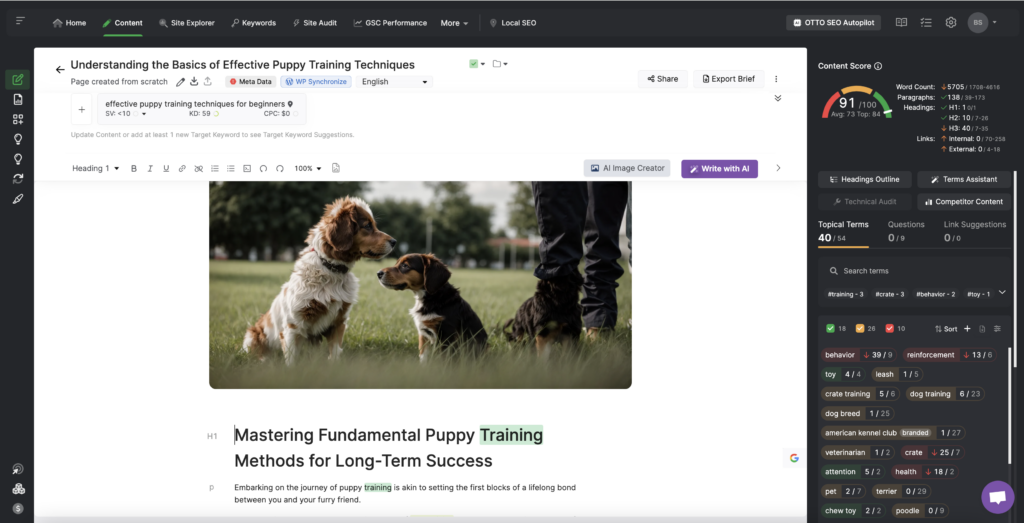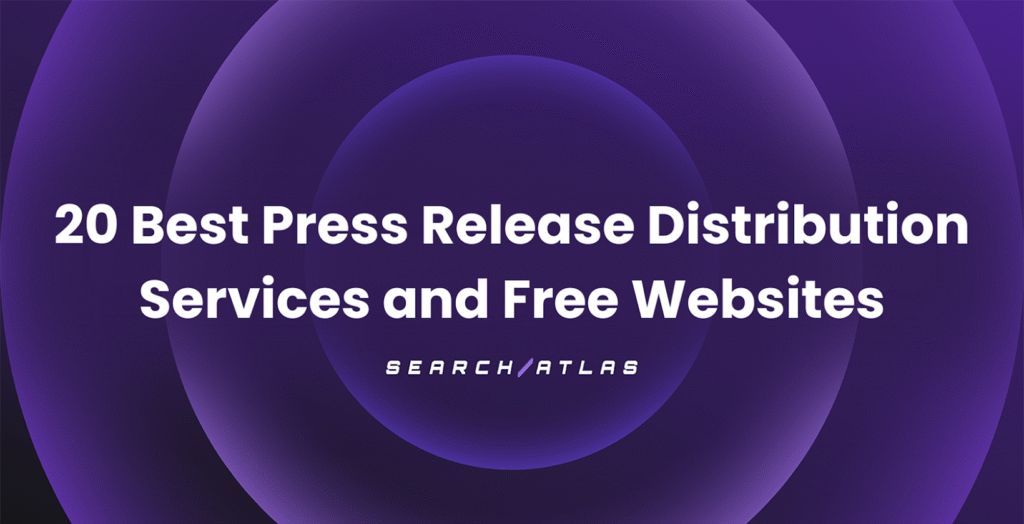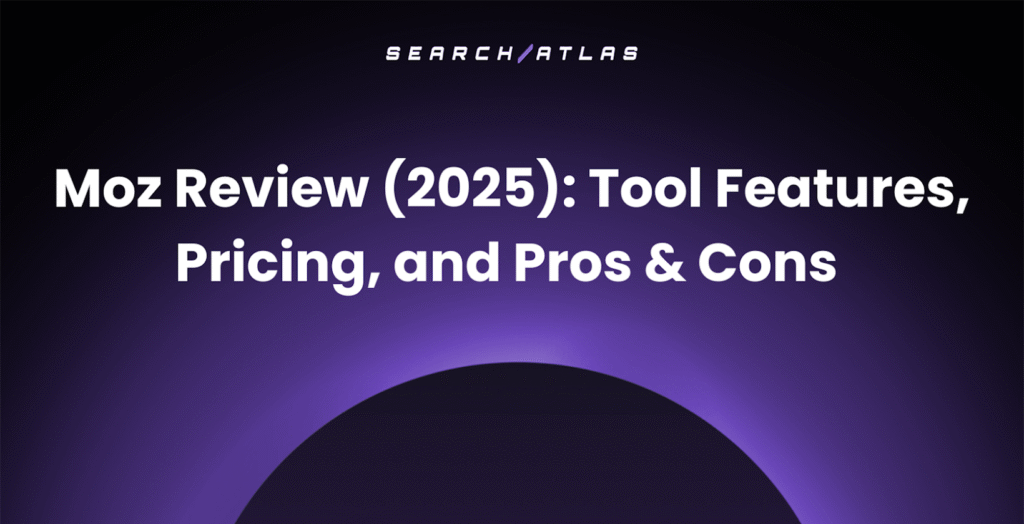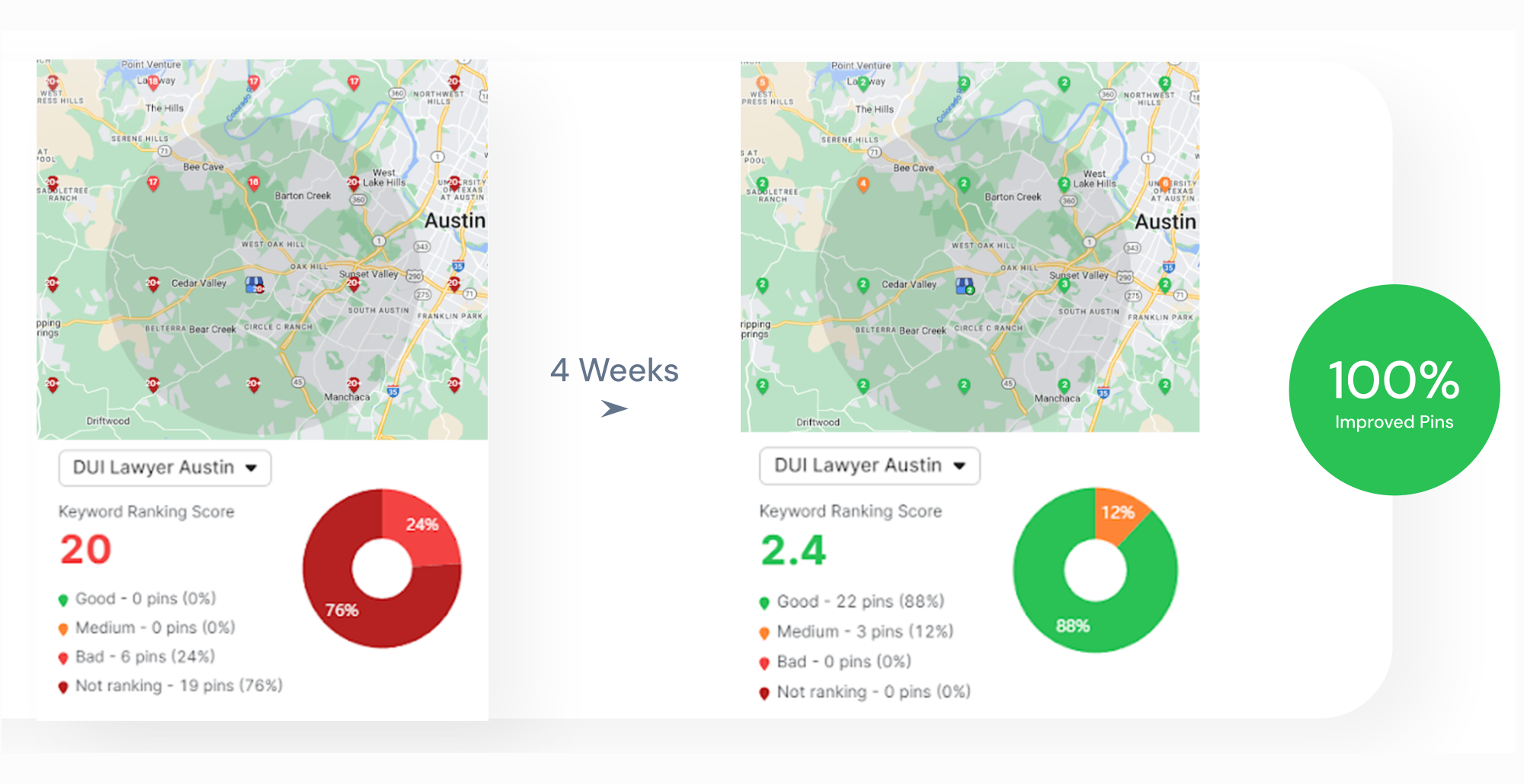Who shows up first when someone in your area searches for what you offer: Our business or your competitor’s? The answer often comes down to how well you’ve nailed local keyword research. 📍
Even if your products or services are top-notch, they won’t matter if customers can’t find you. A strong local keyword research strategy helps connect you with people actively looking for what you offer. Right when they need it.
So, how do you make your business the go-to choice in your area? We’re about to break down what local keyword research is, how to do it in 8 easy steps, and how to automate the process.
Read on to find our secrets! 🤫
What Is Local Keyword Research?
Local keyword research finds the exact words people in your area use to search for businesses like yours. It helps you appear at the right time, whether they need a “24-hour plumber near me” or the “best coffee shop in Brooklyn.”
It influences your website’s content, how your pages are structured, and even how you present your business in ads and social media. The goal? To make sure your business appears when local customers need you most.

Why Is Local Keyword Research Important for Local Businesses?
Local keyword research helps you understand how people look for businesses like yours, so you can target the correct terms and show up when they need you most.
Many business owners assume they know their best keywords but often miss out on valuable search terms. But without local keyword research, you might overlook some high-intent searches that bring in real customers.
According to SagaPixel, 46% of all Google searches have local intent, representing billions of potential opportunities for local businesses. Plus, 22.6% of all web traffic comes from local searches, and mobile users are 35% more likely to visit a store after searching for a local service.
By doing local keyword research, you can:
- Increases your business’s visibility in search results.
- Helps attract high-intent, ready-to-buy customers.
- Provides insights to improve your website’s structure and content strategy.
- Boosts conversions by targeting the right search terms.
Local vs Traditional Keyword Research: How are they Different?
Traditional keyword research targets broad audiences interested in topics or products regardless of location. Local search uses local SEO tools and focuses on “where” and “when,” connecting businesses with nearby consumers ready to take action.
To illustrate this point, compare these two examples.
- “Best breakfast”: This could indicate an interest in recipes or nutritional tips.
- “Best breakfast in Brooklyn”: This is a clear intent—find a place to eat.
The strategy involves understanding how people search, identifying your audience’s needs, and finding opportunities in your local market.
Now, let’s look at the difference between these searches:
- “How to fix a microwave”: Someone wants to solve the problem themselves.
- “24 hour microwave repair near me”: Someone wants to hire help right now.
The second search is related to time and is much more likely to lead to a sale, as it shows urgency and readiness to purchase.
Google also recognizes two main types of intent in these searches:
- Explicit: Users directly mention a location, like “mechanic in Brooklyn.”
- Implicit: No location is stated, but the context suggests a nearby need, such as “urgent bike repair.”
You might wonder how Google can figure out what you’re looking for nearby without specifying a location. It uses several sources, including:
- Your device’s GPS data in real-time.
- Places you’ve saved in Google Maps.
- Your past searches and activity.
- Your approximate location based on IP address.
These factors allow general-sounding searches like “coffee shop with Wi-Fi” or “emergency dentist” to return highly relevant local results.
8 Simple Steps to Conduct Local Keyword Research (And Nail It)
If you still think local SEO is just stuffing “near me” and your city’s name everywhere, stop right there! ✋
Search engines have gotten smarter, and that outdated trick won’t cut it anymore.
Your potential customers aren’t just searching randomly: They have specific needs, moments, and contexts. We’re breaking it down into eight simple steps to help you find the right local keywords.
1. Map Out Products and Services to Build Your Keyword List
To kick off your local keyword research, start by making a list of the leading products and services your business offers. This helps you narrow down the key terms to focus on.
For example, if you run a bakery, your product list could include:
- Fresh bread
- Pastries
- Cakes
If you’re a landscaping company, your services list might include:
- Lawn care
- Garden design
- Tree trimming
2. Define Main Keywords to Target
Start by identifying your main keywords. These typically fall into three main categories.
- Industry terms: Broad words describing what you do (bakery, pet store, fitness center).
- Specific products and services: Detailed descriptions of what you offer (cooking classes, dog grooming, custom birthday cakes).
- Searches with local intent: Phrases showing an immediate need in a specific area (same-day cake delivery downtown, dog groomer in Midtown, personal trainer in the West End).
To find your initial keywords, use a keyword research tool that allows you to search keywords specifically for the city where the business is located. The tools should also show the difficulty to rank, average monthly searches, if it’s trending up or down, and more.
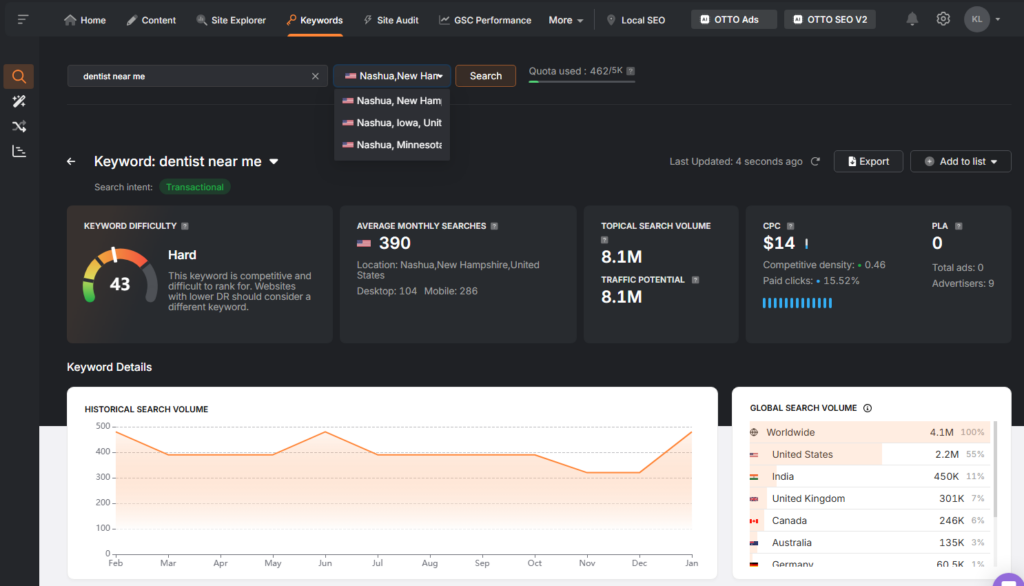
You can explore other options to find strategic hyperlocal keywords:
- Google autocomplete: When you start typing a term in the search bar, Google suggests frequently searched words.
- People also search: At the bottom of the results page, the “People also search for” section reveals terms commonly used by searchers.
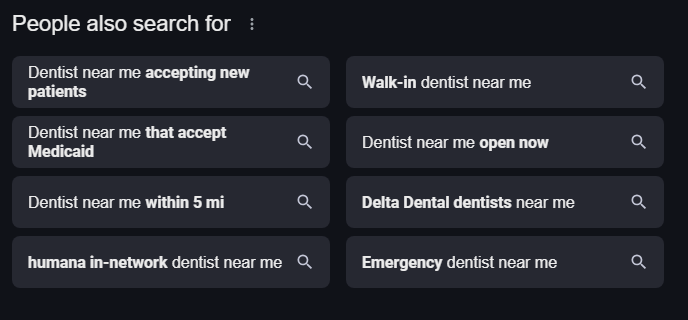
3. Prioritize the Right Keywords to Maximize Impact
Not all keywords are worth pursuing. To avoid wasting time on terms that won’t deliver results, you need to analyze some key metrics.
Here’s what to analyze:
- Local search volume: How many people in your area search for this term?
- Competition level: Is there an opportunity to rank, or is the term too competitive?
Keywords with little search volume or extremely high competition probably won’t pay off. Focus on terms with a good balance, giving you better visibility and quality traffic.
4. Expand Your Keywords with Related Terms to Capture More Traffic
While generic keywords reach a broad audience, related and longer keywords connect your brand to people with more specific interests.
Work with variations of terms that reflect how your audience naturally searches. If you run an auto repair business, for example, don’t limit yourself to “auto repair near me.”
Use a Keyword Magic Tool to find what people are searching for and what Google may also consider variations, such as “auto service repair near me” or “auto car repair shops near me”
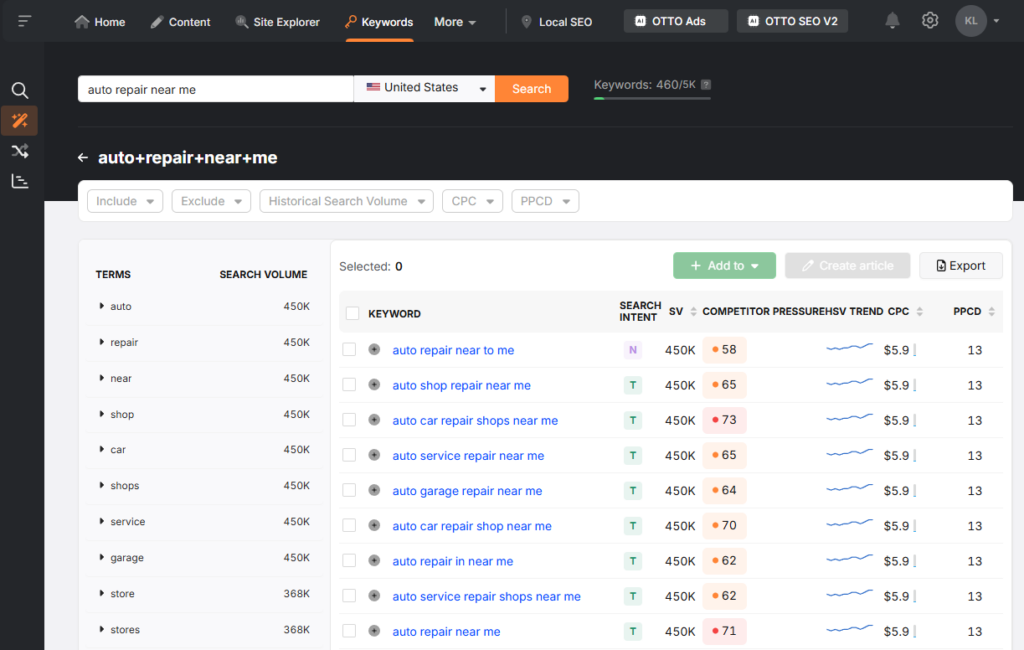
This approach increases your chances of appearing for related searches and improves user experience by offering content that truly matches search intent.
Why invest in this strategy? Here are the benefits:
- Less competition: Broad terms like “sneakers” are highly contested. More specific options, like “waterproof women’s hiking shoes,” have fewer competitors and a higher chance of ranking.
- Higher conversion: Someone searching for “24-hour truck mechanic” has an urgent need and is more likely to make a quick decision.
- Precision in segmentation: Searches like “real estate lawyer in the city center” show a well-defined interest, increasing the chances of qualified contact.
5. Analyze Your Local Competition to Find Opportunities for Growth
Want to get a better sense of the competition and uncover some hidden opportunities? Take a good look at your local competitors!
By analyzing what your competitors are doing, you can spot competitors’ keywords and know what they’re targeting and how they’re structuring their local SEO strategies.
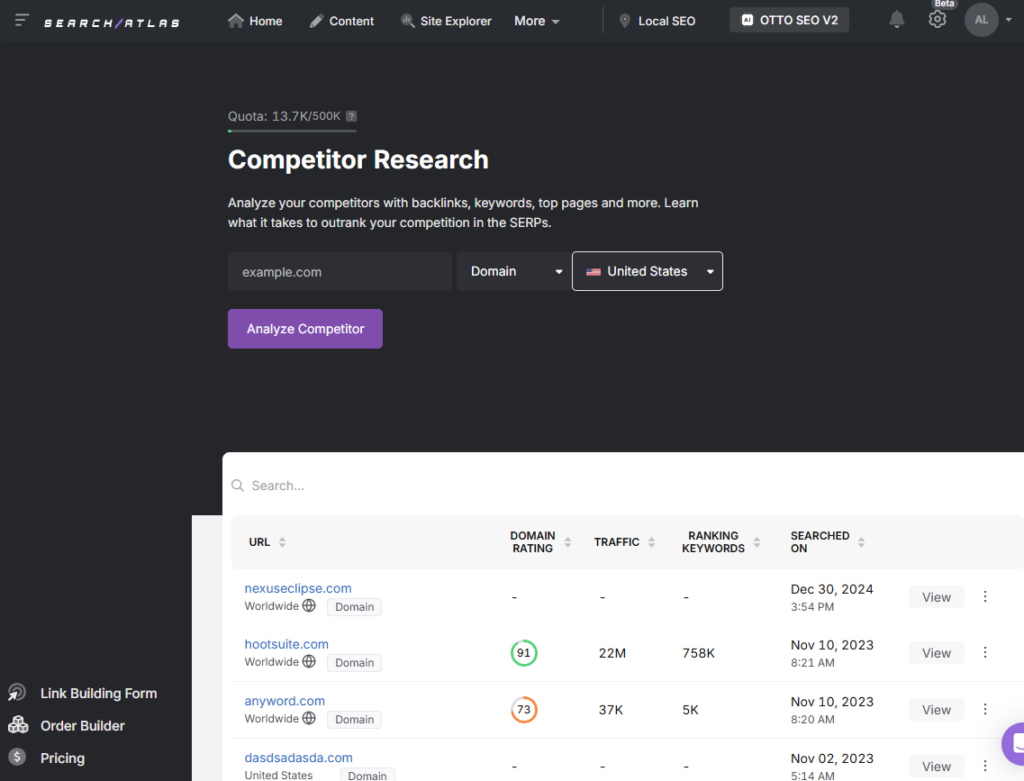
Here’s what to keep an eye on:
- Keywords on service pages: See which terms they prioritize and how they incorporate them into their content.
- Customer reviews: Look for recurring phrases that could be valuable keywords for your own ranking.
- Local SEO structure: Check how they organize their content, titles, and descriptions to boost visibility.
Also, comparing your site’s performance with theirs can show which keywords are driving more organic traffic. Use technical SEO tools to evaluate the technical aspects of your website and your competitors’ websites.
6. Optimize for Mobile and Voice Search to increase discoverability
When people search locally on their phones, the pattern is clear: They’re looking for something fast, specific, and right nearby. If someone’s walking down the street and needs a service, they aren’t going to type out a long sentence—they want quick answers.
To capture this mobile audience, here’s what to keep in mind during your local keyword research:
- Brevity: Short and sweet works best. Think “24-hour pharmacy downtown” instead of long, detailed descriptions.
- Urgency and convenience: Words like “now,” “open,” “nearby,” and “fast” pack a punch.
- Specific intent: Terms like “budget,” “promotion,” and “best price” show users are ready to make a decision.
Also, make sure your website is mobile-friendly. A slow or clunky site will drive potential customers away.
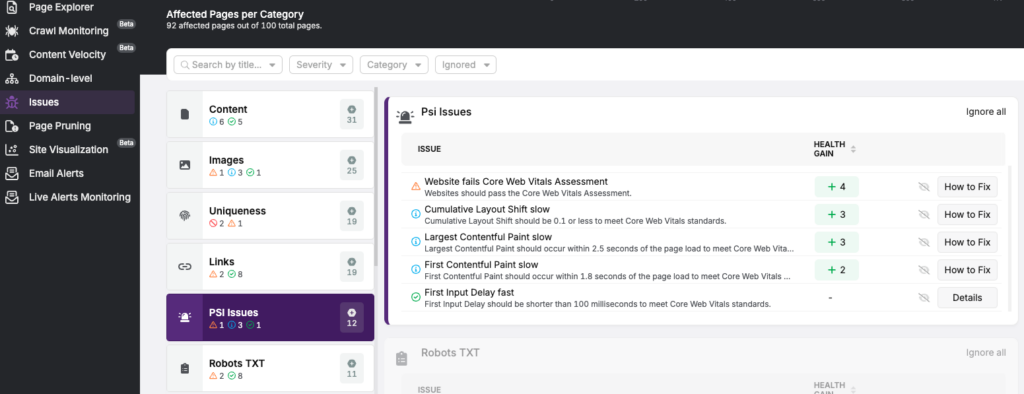
What about voice searches? With voice search, the queries tend to be more conversational. For example:
- Typed: “Pet friendly hotel Chicago”
- Voice: “Which pet-friendly hotels are open now in Chicago?”
Aim for long-tail keywords that sound more natural to keep up with this trend, like “Where can I find 24-hour parking near Michigan Avenue?” Plus, adjust your content to give quick, clear answers since voice assistants often pull concise snippets to display in search results.
7. Adapt Your Strategy to Seasonality and Trends to Stay Relevant
Local search terms shift throughout the year, influenced by seasons, holidays, regional events, and changing consumer habits.
Different keywords pop up depending on the time of year. For example:
- Summer: People search for things like “nearby beaches with facilities” or “best pet-friendly hotels in town.”
- Black Friday: Keywords like “discounted electronics stores downtown” or “malls open late today” see a spike.
- Thanksgiving: The hunt for “grocery stores selling fresh turkey” increases, while around July 4th, searches for “where to buy fireworks near me” rise.
A great keyword research tool can show you how often a specific keyword is searched during the year.
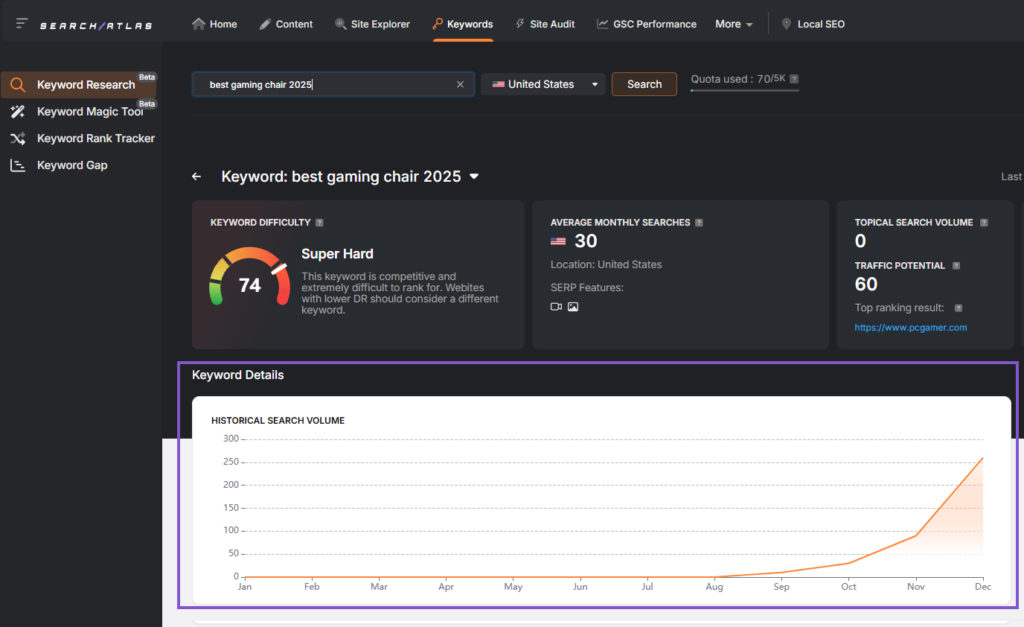
This way, you can fine-tune your campaigns and content to grab more local traffic during peak times.
8. Monitor Performance with a Heatmap to Spot Areas for Improvement
Monitoring your local keyword rankings is a great way to see how well your SEO efforts are paying off. Using a local heatmap tracker allows you to visualize your website’s position in different areas, helping you spot trending keywords, gaps, and opportunities for improvement.
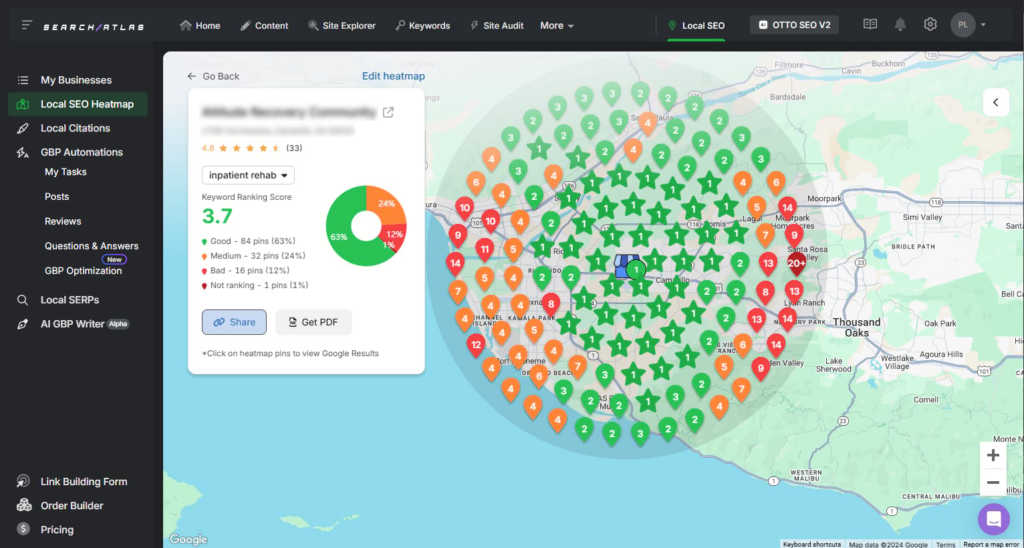
With this tool, you can:
- Identify new keywords where your site is gaining visibility.
- Track ranking changes to see if your position is going up or down.
- Measure the effectiveness of recent optimizations to determine if your strategies are working.
Keyword Research is Only the Start: Here’s What Comes After
Local keyword research is only the first step in ranking for local search. 🗺️
But it goes beyond keywords, it also involves optimizing your website, setting up and regularly updating your Google Business Profile (GBP), encouraging reviews and answering them, and more.
Historically, ranking in local search used to take months of effort, but the process has sped up dramatically thanks to automation.
For example, a local electrical company saw a 100% improvement in its local rankings in just 17 days. 🤯
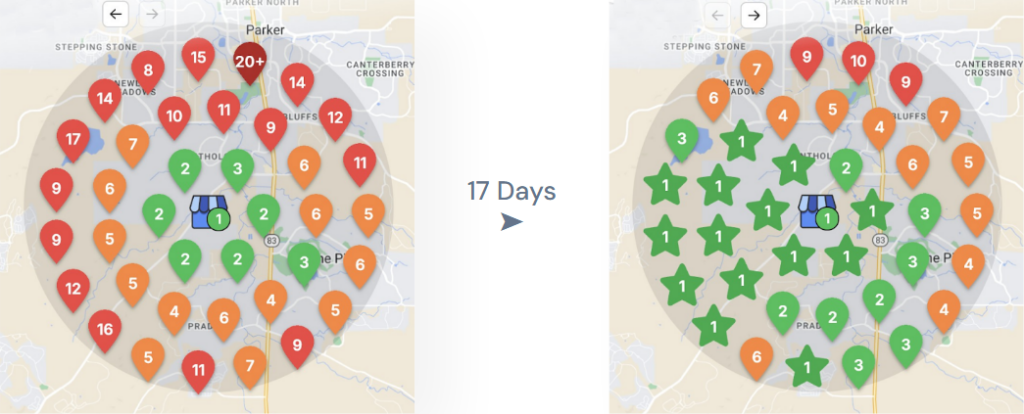
They went from mostly red and orange markers on their map (showing low visibility) to predominantly green stars (indicating high visibility).
This company now ranks #1 for 14X more locations, and in the top 3 for 3X more locations. You can read the full case study for the local electrical company for more details.
At Search Atlas, we make these results possible through automation, saving time and reducing costs while delivering tangible, measurable outcomes. Here’s how we do it:
- Local Heatmap Tracker: Track keyword performance across locations with interactive heatmaps.
- Local Citation Builder: Build lasting citations on top directories like Foursquare and Neustar with a one-time purchase.
- GBP Automations: AI-powered tools for managing GBP posts, Q&As, reviews, and optimizations.
- Location Spoofing: Simulate searches from different regions to check your rankings.
- GBP Reporting: Generate detailed reports to track performance and growth.
The best part? You can try all of these tools for free! Start your trial today and explore everything with no commitment, cancel anytime!


